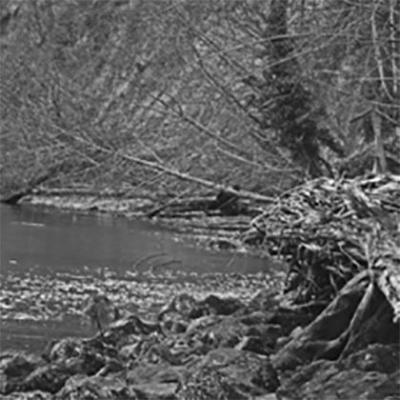
Come Hell or High Water

There is nothing ambiguous about the tide. It’s either coming in or going out; except when it is slack, or not doing much at all. Being caught by the tide can be frightening. The West passage of Vashon is famous for it’s fast moving tides, some going over 4 knots and always flowing North whether the tide is ebbing or flooding. The current was so strong that it could stop a tug laden with barges or even cause the tug and tow to go backwards. The tugs timed their run in order to make it through Colvos Passage before the tide changed and ran the other way. One day we saw two overloaded barges tip over and lose their gravel to the tide. The dust from the spilling gravel rose high in the air and the hitchhiking seagulls rose with the cloud. The tide had stopped the tug and it had got stuck cross ways trying to turn around to head back where it had come from.
We weren’t very old when the folks took us to an Indian village on the Olympic Peninsula to see an ocean storm. We stood on a hummock right in the middle of the village to watch the tide rise and the wind blow. At the foot of this hill, was a small frame house painted yellow. Chanting was coming thru the open windows. Nice to hear, but the Spring tide was rising and getting close to the house and pretty soon it became apparent that the house was going to be flooded. The water started coming up the steps and not long after; the people poured out of the Church from both doors, headed for higher ground. It was a stormy day when the tide came in and flooded the village.
It was an exceptional time to be there and watch the dugout canoes come in from the Pacific, laden with herring, spilling over the sides. The back end of the dugout was flattened to accommodate an outboard motor and the front end was pointed.
As kids, we were always looking for things to frighten us or trouble to get into, although it came more or less naturally; such as walking too far on the beach when we knew we had to go back the same way we had come. Running on wet boom logs or swinging out over Bradley’s canyon on strands of ivy was exciting. If the ivy broke, the ground could be very unforgiving.
We were combing the beach south of Cove one day looking for treasures in the drift or in sailor’s terms, flotsam and jetsam and had gone too far. Sometimes we would find a life jacket or seat cushion in the drift and cart it home.
The tide was coming in and it was starting to rain. In a while there was no beach ahead of us and the water was too deep to wade around the 40 foot clay cliff in front of us. There was a 6 inch wide trail up and across the cliff but it petered out about halfway. At that point we were 20 feet above the water surging against the cliff and brother Mike was getting cold and starting to whimper. Cousin Jim was spread eagled against the clay bank, trying to get a foothold ahead of him and was scared; so scared, he froze. He couldn’t go forward. “I can’t make it; I’m going to fall”, he said. Mike and I discussed leaving Jim to work it out for himself. Maybe we could find a different way to climb the cliff and hack our way through the woods to get a rope and come back to help him. “Can you reach that root sticking out of the bank, and pull yourself across”? I asked him. The tide was too high to wade. We couldn’t touch bottom. What a pickle we were in. The bank was too steep to climb and the tide had prevented us from going forward to look for a trail up from the beach. If we waited for the tide to drop, it was going to be two hours; before we would be able to walk the beach. We were soaked to the skin and going to be late for dinner. Unlike the Indians who ran from the tide, we did not have the sense not to get stuck on the beach. Cousin Jim grabbed ahold of the root and it held.
- Login to post comments
